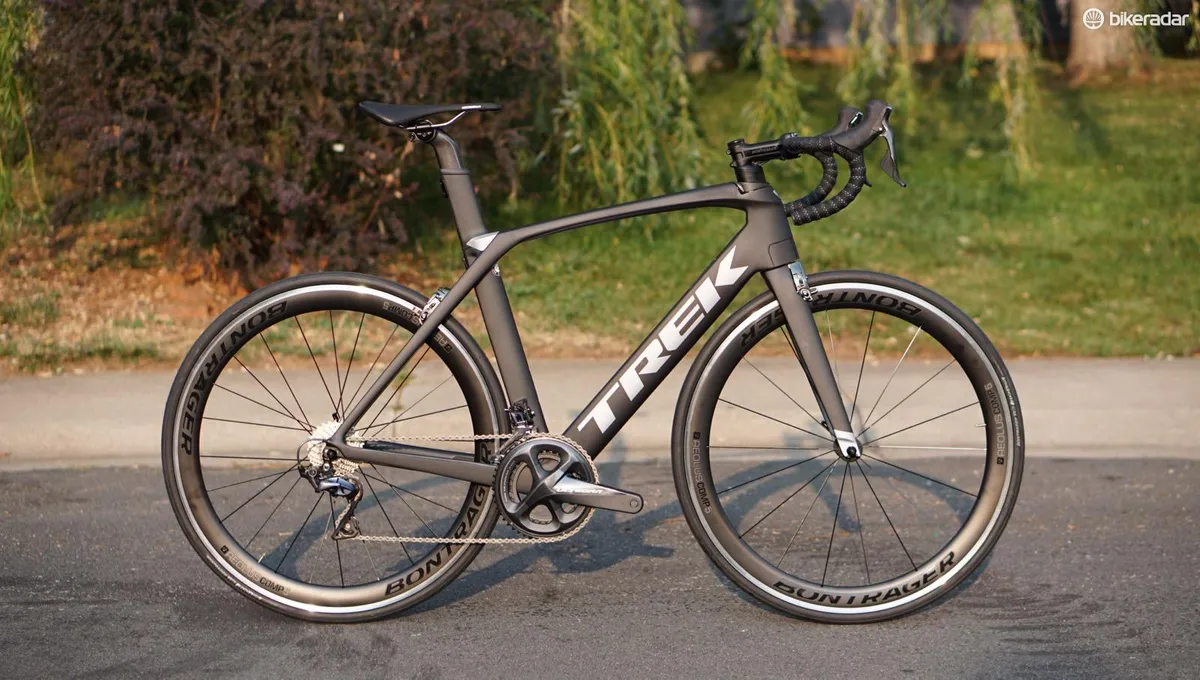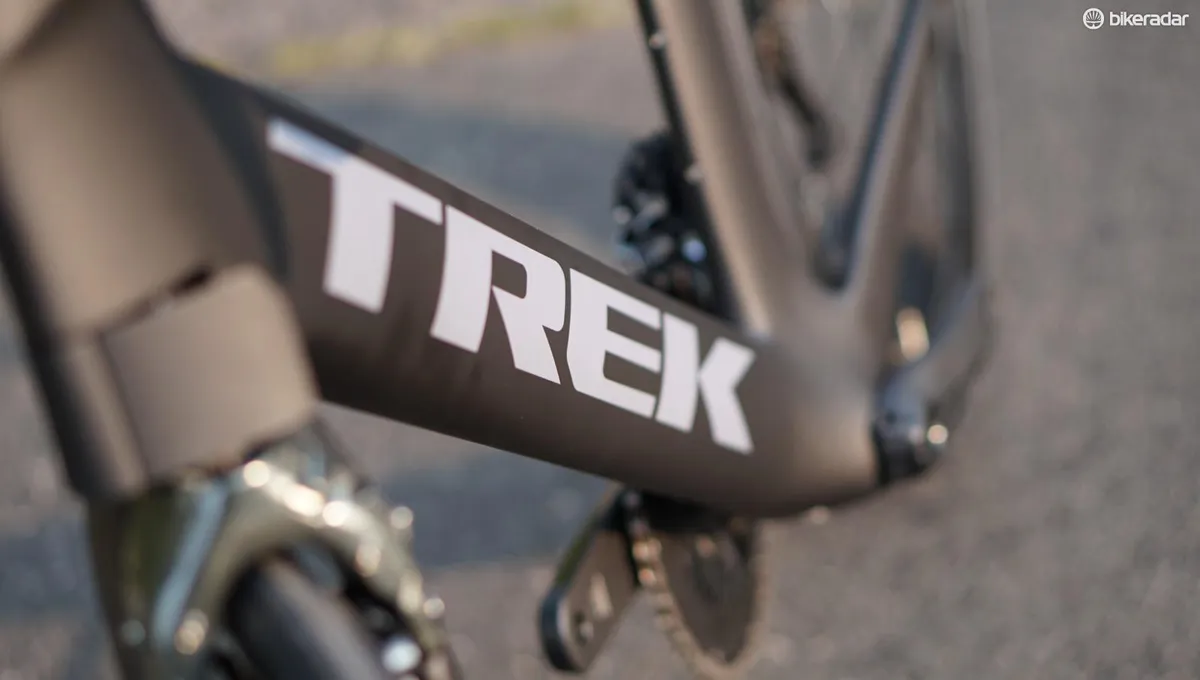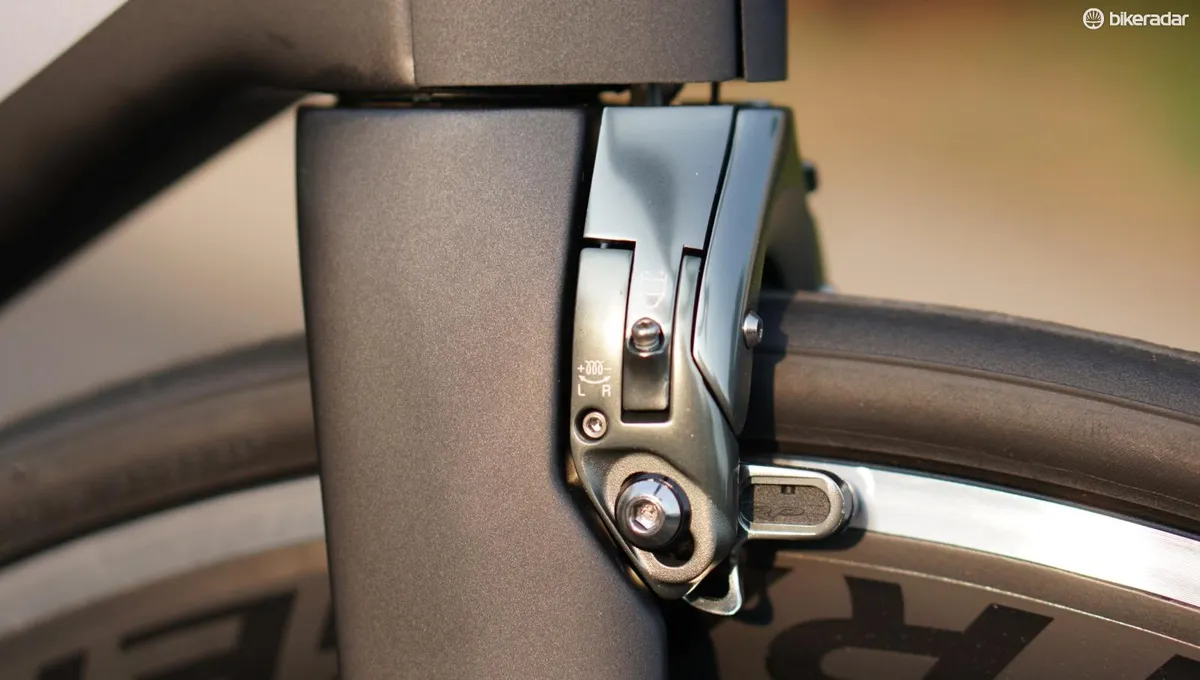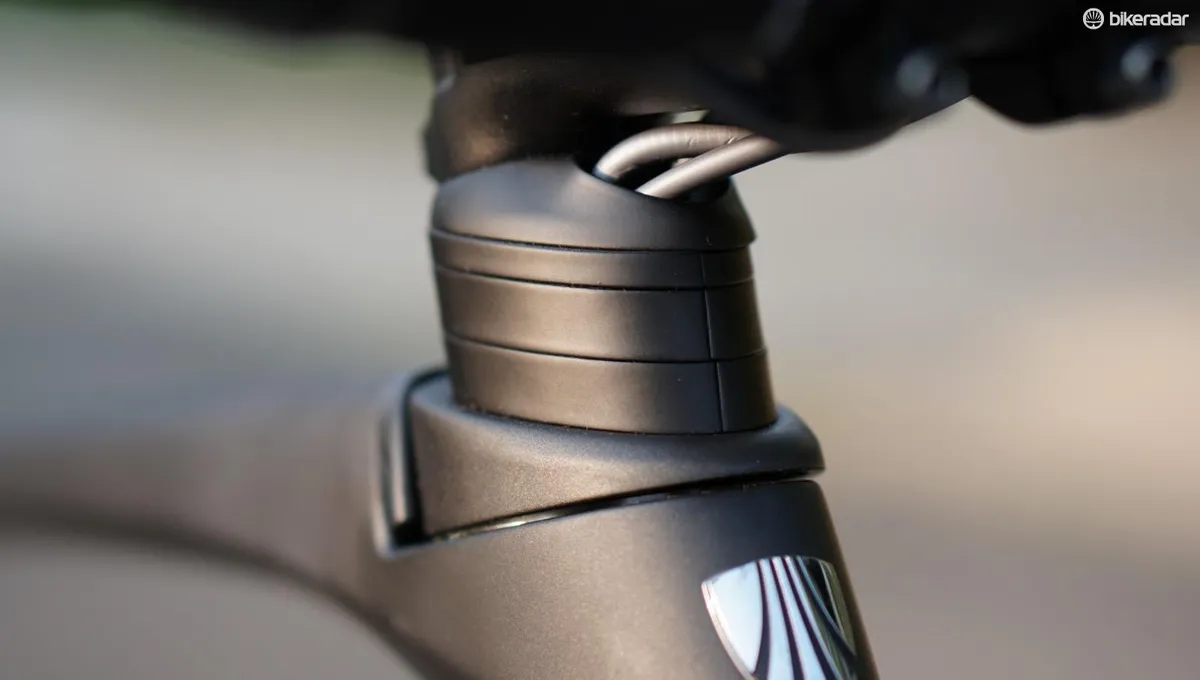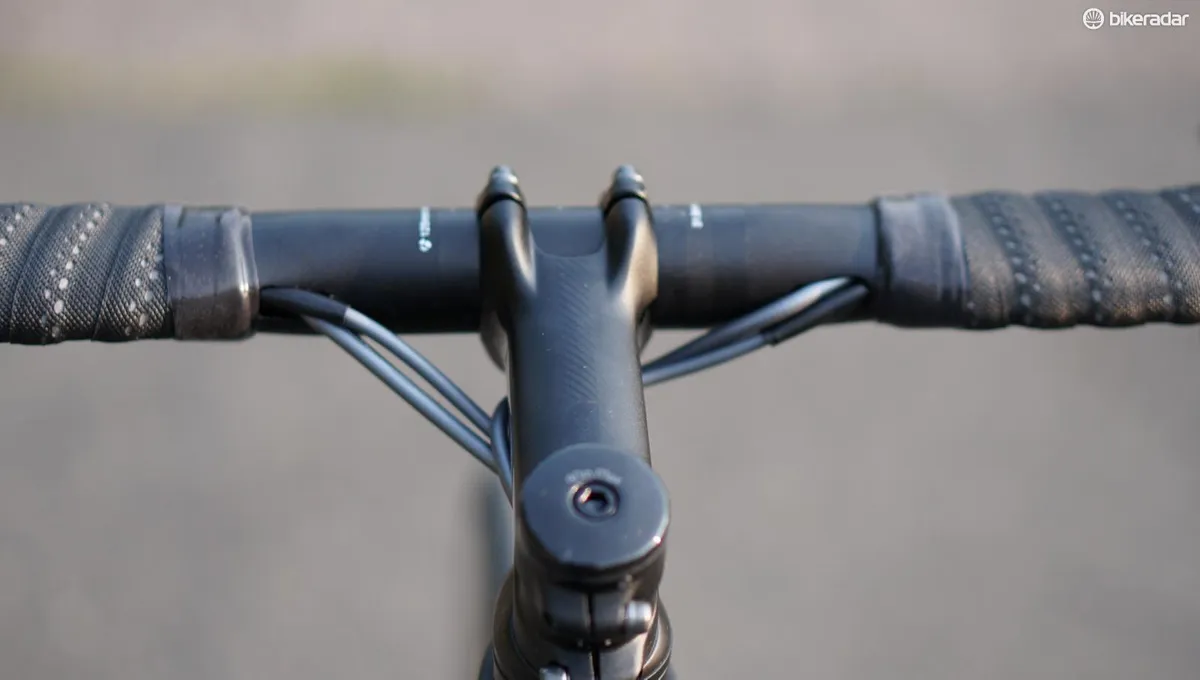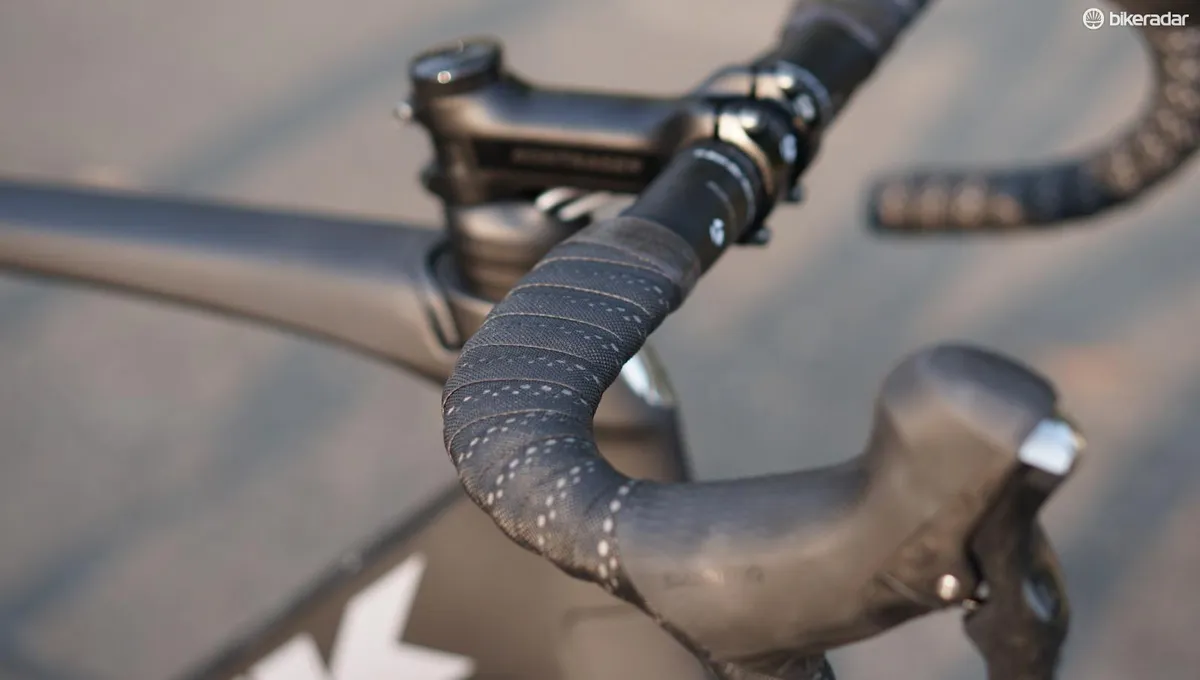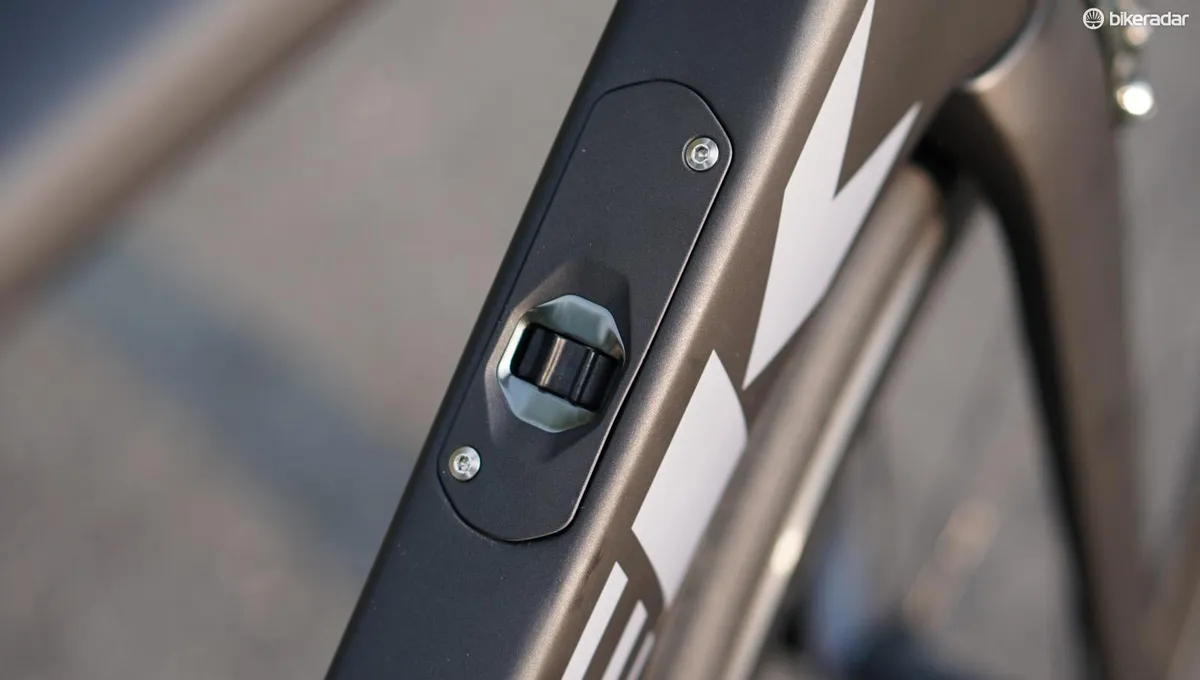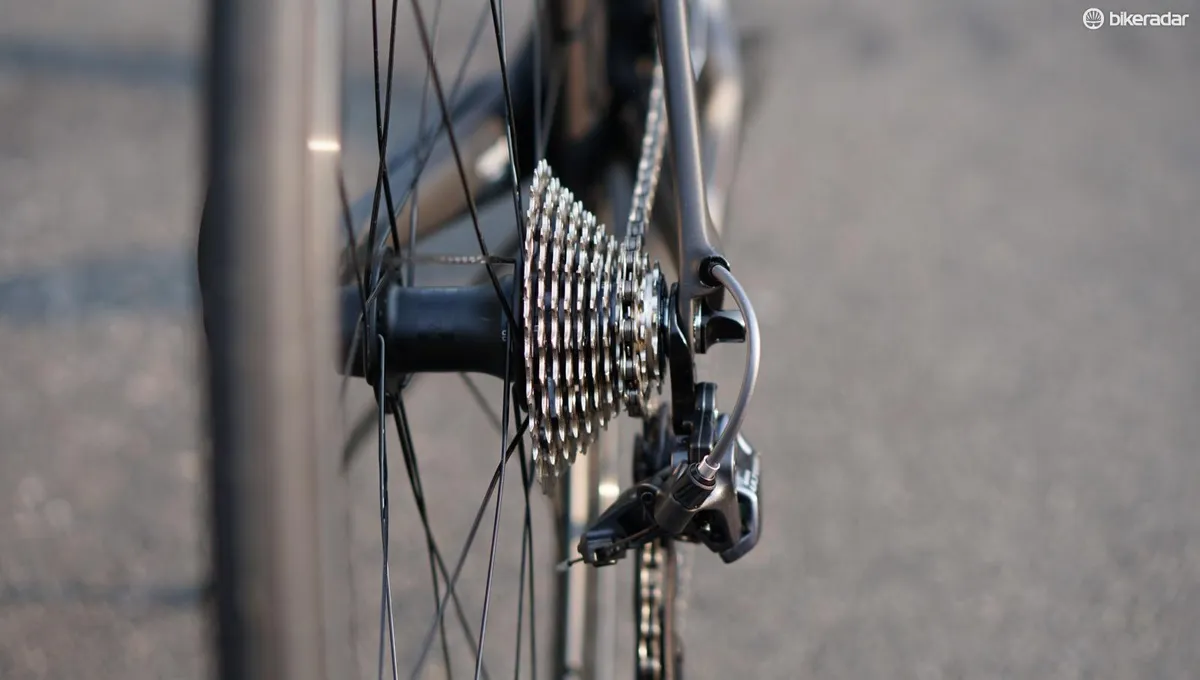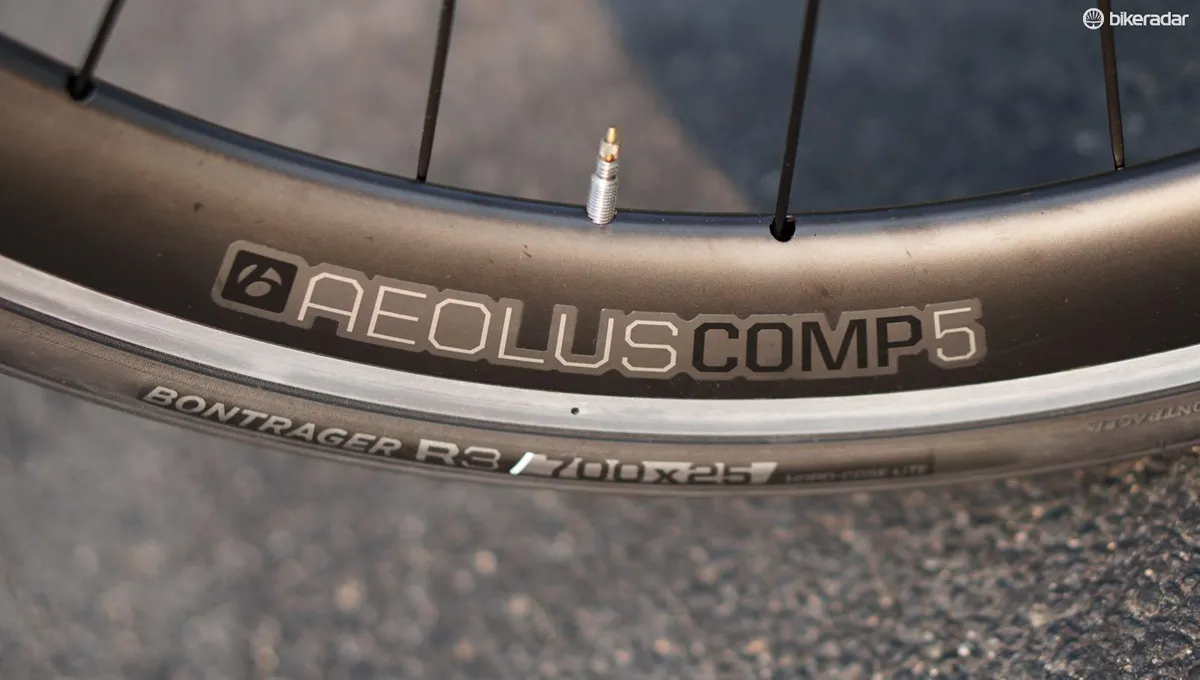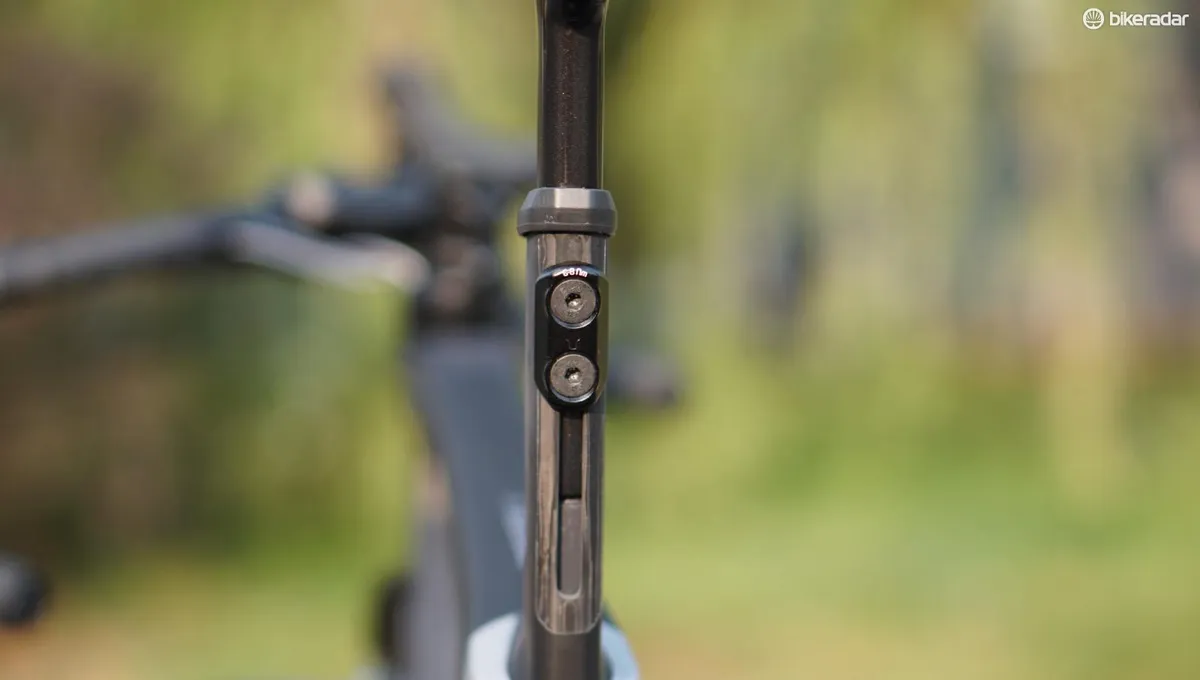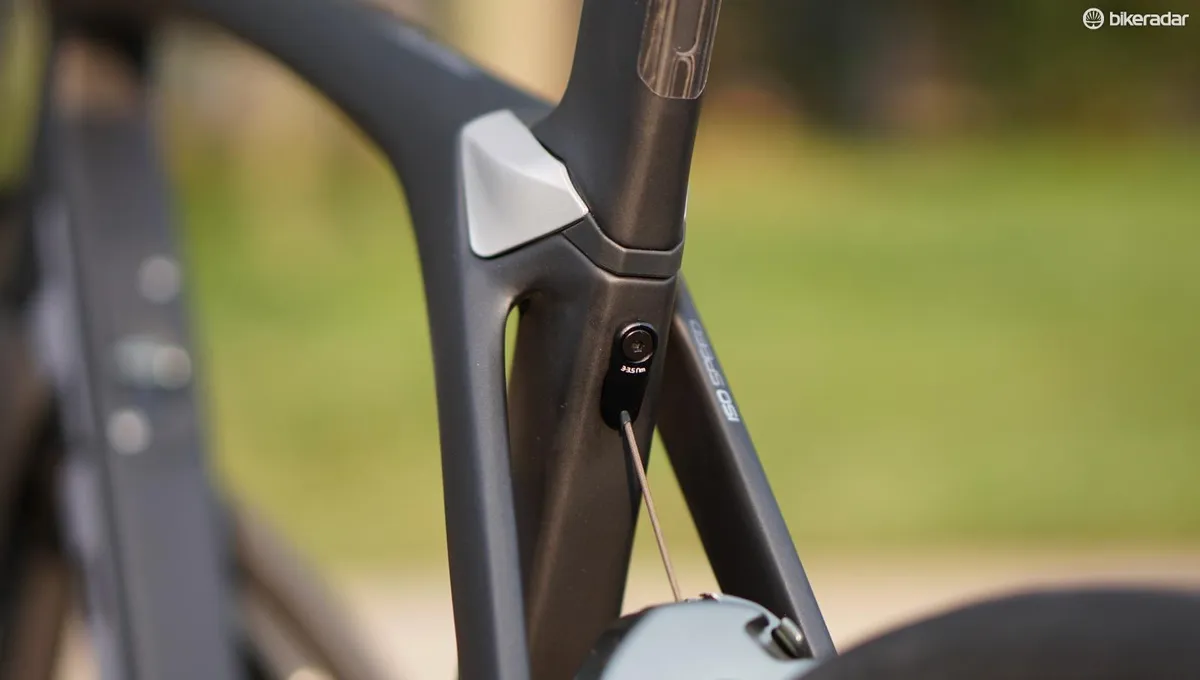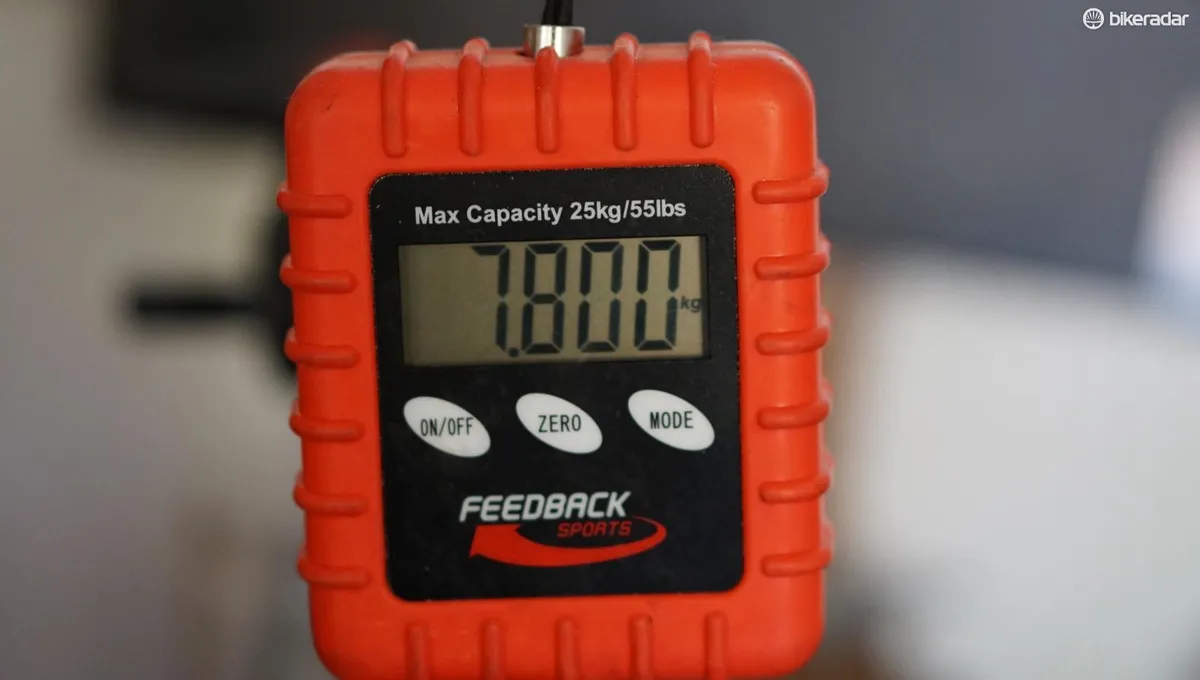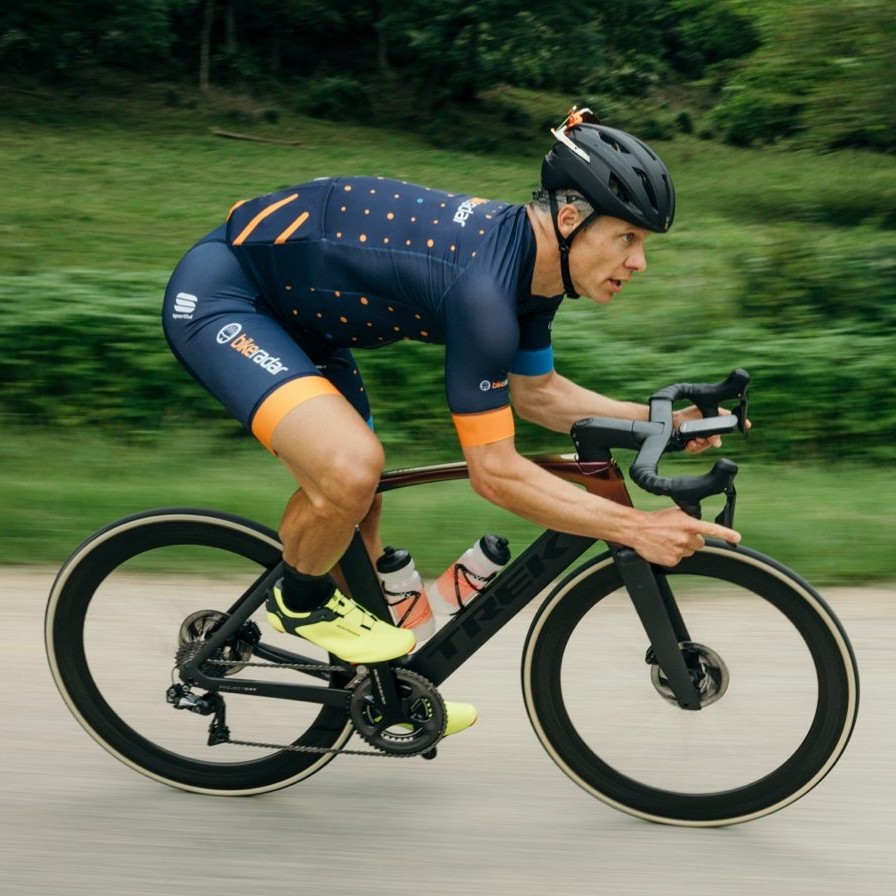Interested in an aero bike but want something with a normal, adjustable cockpit and a pricetag that isn't five figures? Trek's new Madone 9.0 might be what you're after.
Trek Madone 9.0 highlights
- Same frame and fork as $12,000 / £12,000 / AU$13,499 Madone 9.9
- Normal stem and adjustable aero handlebar
- Shimano Ultegra group with Madone Aero brakes
- Bontrager Aeolus Comp Tubeless Ready 50mm wheels
- 50-62cm sizes, four color options
- $3,999 / £3,500 / AU$5,499
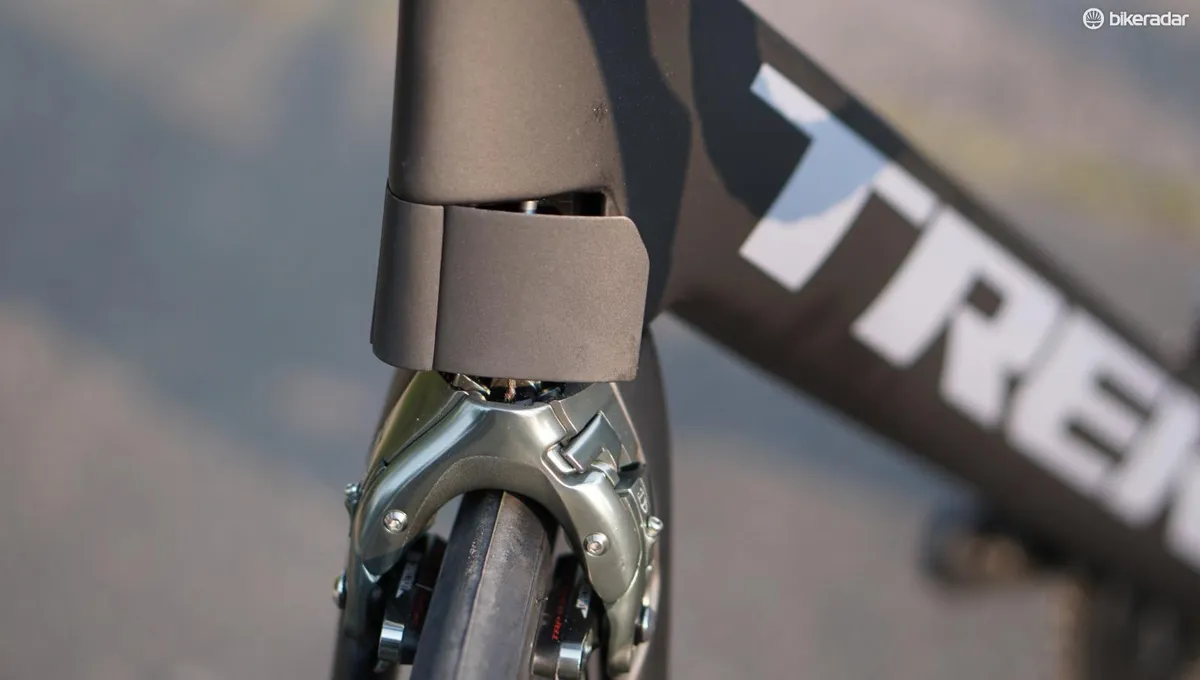
The head tube has cuckoo-clock-like panels that hide the upper portion of the integrated caliper
Aero, but...
In late 2015 Trek overhauled the Madone as an ultra-aero race machine, with not only cables but the brakes themselves hidden from the wind. The bike received plaudits from several cycling outlets including BikeRadar for its aero performance and its comfort, thanks largely to Trek's IsoSpeed flex design.
But while the bike managed to avoid the typical buggabo of early aero bikes — they're fast, but they ain't comfy — it did proceed with a typical aero compromise of ergonomic adjustability in favor of an ultra-clean integrated bar/stem that is demonstrably faster.
For context, most major companies with a high-end aero bike sell it with some form of integrated bar/stem, for the same reason: it's aerodynamically faster than a round bar and normal stem by a significant margin. Most companies claim at least a 4-watt improvement. (A good aero bike has a total drag number in the 70-watt range.)
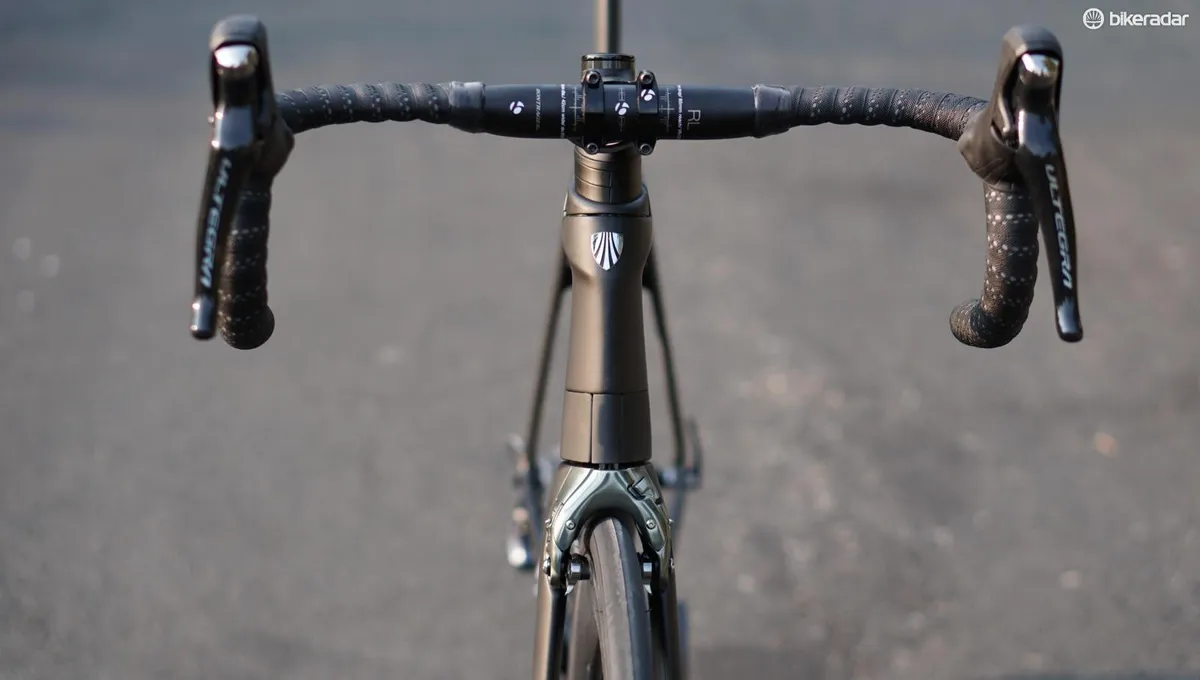
And while integrated bar/stem cockpits work well for many riders, some people would prefer particular bar shapes, or bar angles, or at least the ability to make changes. With an integrated design, you get what you get.
Integrated pieces have another issue: cost.
Enter the Madone 9.0. Now Trek has an aero bike with the exact frame and fork as the $12,000 / £12,000 / AU$13,499 Madone 9.9, but with a normal stem and an aero but separate handlebar — and a much more attainable $3,999 / £3,500 / AU$5,499 price tag.
Made from the brand's 600 series OLCV carbon the Madone 9.0 sees the H2 geometry — only the Race Shop Limited version gets the H1 fit.
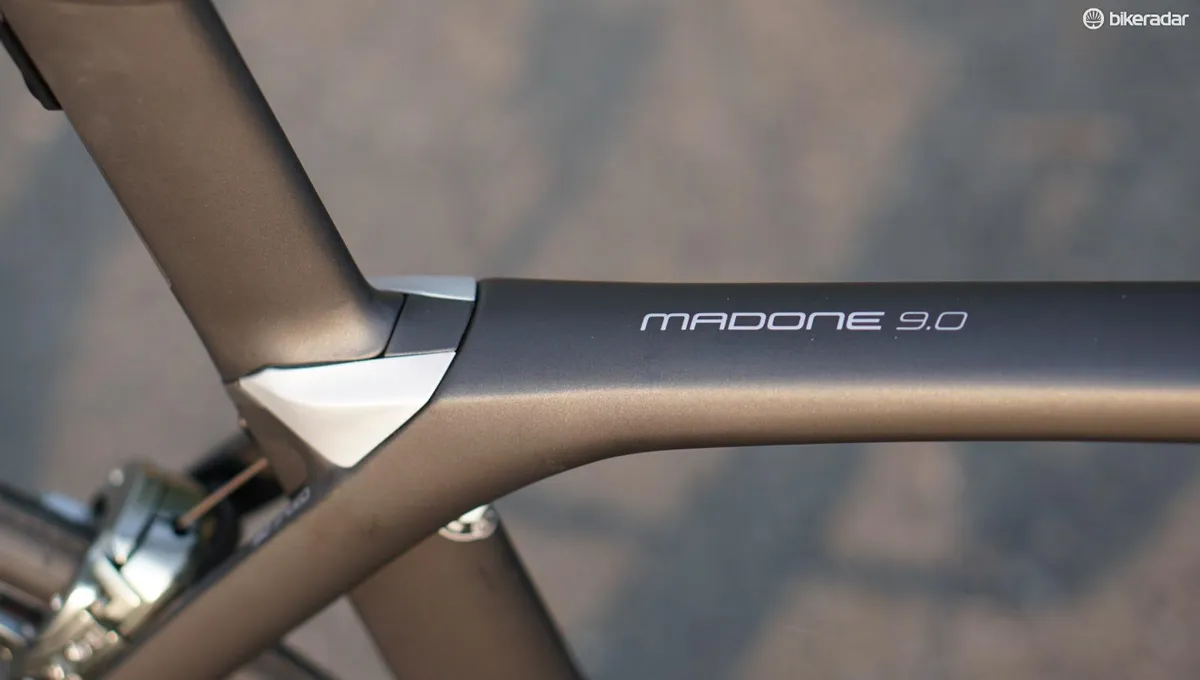
Deep wheels and a compact crank
The Bontrager Aeolus Comp 5 wheels can be set up tubeless but come with 25mm standard clinchers and tubes. Although not as light as all-carbon hoops, the aerodynamics of the metal-rim-with-carbon-fairing design have to be very similar. And you get the more consistent braking of an alloy track.
Current edition Shimano Ultegra continues the Japanese company's fine tradition of an excellent second-tier group that for all intents and purpose functions like Dura-Ace but with a few more grams.
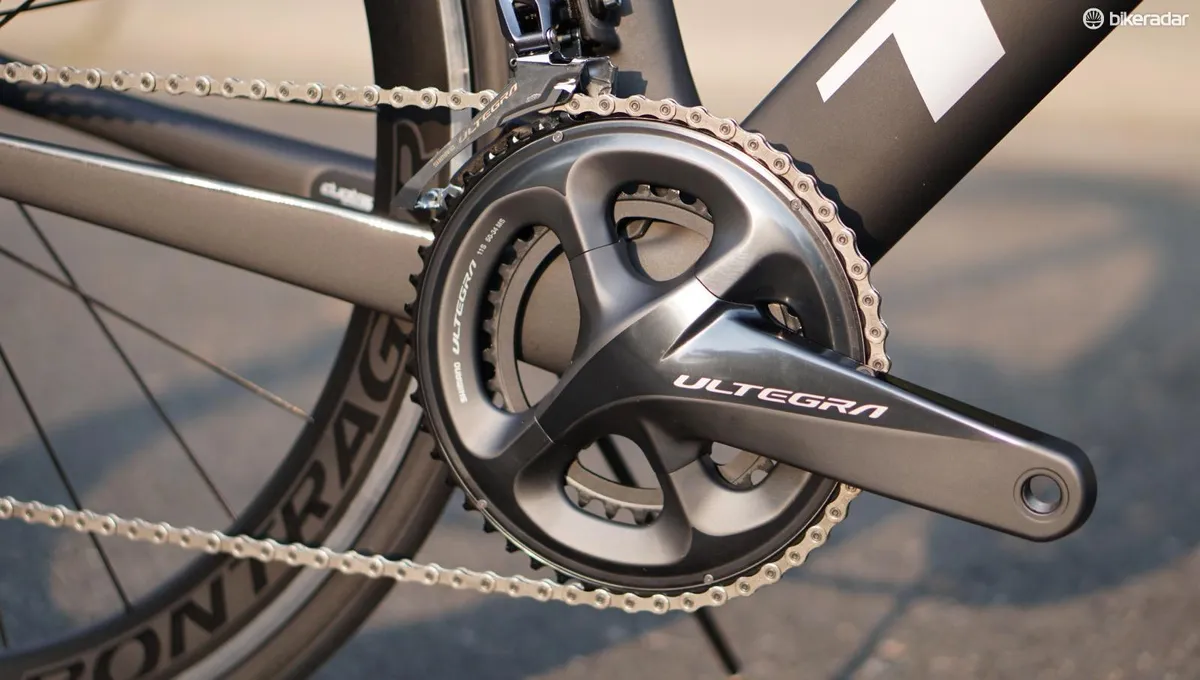
One curious spec choice is the compact 50/34 crank. When paired with the 11-28 cassette this is a great everyday setup, but it seems like amateur racers in particular would be drawn to such an aero bike, and might want if not necessarily need a 52/36. If this is a concern, it is likely that your local Trek dealer could swap it out for you.
